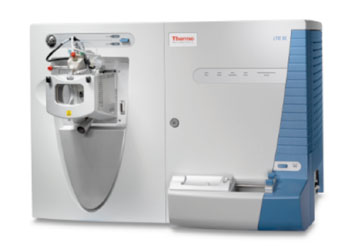Urinary Test Diagnoses Cancer and Infertility-Causing Parasite
By LabMedica International staff writers
Posted on 03 Jun 2014
A fast, noninvasive way to test for a cancer-causing parasite that kills hundreds of thousands of people every year has been discovered. Posted on 03 Jun 2014
About 243 million people are infected with schistosomiasis, which kills about 200,000 people every year and following infection, women often contract female genital schistosomiasis, which affects the cervix and uterus resulting in bleeding and pain during sex and infertility.
Scientists at the University of Porto (Portugal) collaborating with their colleagues in Angola, conducted a cross-sectional study of female residents of a region in Bengo province (Angola), endemic for schistosomiasis haematobia. Ninety-three women and girls, aged from two to 94 years were interviewed on present and previous urinary, urogenital and gynecological symptoms and complaints. Urine was collected from the participants for egg-based parasitological assessment of schistosomal infection, and biochemical analysis.
The entire micturition volume was filtered through a polycarbonate membrane (Whatman plc; Springfield Mill, UK) and subsequently the membrane was stained with Trypan blue. Schistosome ova retained on the membrane were identified with the aid of a light microscope. Liquid chromatography diode array detection electron spray ionization mass spectrometry (LC/UV-DAD/ESI-MSn) was performed on a Finnigan Surveyor Plus High-Performance Liquid Chromatography (HPLC) instrument (ThermoFinnigan; San Jose, CA, USA) equipped with a diode-array detector and a mass detector.
The investigators discovered catechols in the urine of women who tested positively for parasite eggs, but not in the urine of uninfected women. The team also found an association between catechols and infertility. In studying the mechanisms involved, the team found that the catechols downregulate estrogen receptors and trigger DNA mutations. Either or both of these actions could be responsible for the bladder cancer and infertility common to schistosomiasis patients.
Monica Catarina Botelho, PhD, the senior author of the study said, “Estrogen metabolism/degradation is a normal body process as estrogens are degraded into catechols and these into quinones. But if there are too many quinones, due to an excessive estrogen production or altered metabolism, this can cause DNA damage, because they tend to bind to DNA disturbing it. Now we detect these molecules not only in the serum, but also in the urine of patients infected with Schistosoma, while uninfected patients do not have them. They have been linked before to cancer as in thyroid, breast and prostate neoplasms, and autoimmunity. Now we see them in infertility associated with schistosomiasis infection.” The study was published on May 21, 2014, in the journal Public Library of Science ONE.
Related Links:
University of Porto
Whatman plc
ThermoFinnigan















